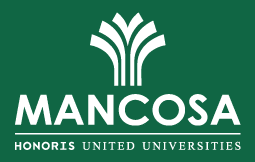Are you aware that you can study at college for free if you are from a low-income family? Yes, you can, and in this post, we will show you a good number of free tuition universities for students from low-income families.
There are many factors that form the basis to the option Low-Income Families make while sending their Wards to Colleges in USA and in the World Entirely. Looking at an annual income that is less than $30,000, they will choose to send their wards to colleges with Tuition fees less than $5,000.
In this article, we are going to discuss in detail, Best Colleges that Offer Free Tuition for Low-Income Families.
But before you do that just know that you must be a bright and Excellent Student before you can access these Free College Tuitions amidst low acceptance rate of such students of low-income families.
Colleges that Offer Free Tuition for Low-Income Families
#1. Harvard University
Harvard University is one of the free tuition universities for students from low-income families. It is a private Ivy League research university located in Cambridge, Massachusetts. The university’s history, wealth, and influence make it one of the world’s most prestigious universities.
The Harvard University Library is the nation’s largest academic library and one of the largest in the world.
The university provides a variety of undergraduate and graduates degree programs. The university has about 20,000 students and a 7-to-1 student/faculty ratio.
Harvard has a 6% acceptance rate and a 97% first-year, full-time student retention rate. SAT test scores (25th/75th percentile) are as follows: Critical reading: 690/790; math: 700/800; and writing: 690/790.
Due to the Harvard Financial Aid initiative, parents with an income below $60,000 are not expected to contribute to college costs.
Home equity and retirement accounts are not considered resources in determining family contribution. Financial aid packages do not include loans.
Families with higher incomes dealing with unusual financial challenges may also qualify for need-based scholarship assistance; however, those with significant assets at all income levels are asked to contribute proportionally more.
Tuition and fees amount to $40,867, while room and board are $13,630.
About 70% of students receive some financial aid and more than 60% receive need-based scholarships. Students are asked to contribute to cover the cost of their education through term-time and summer work.
#2. Yale University
Yale University is another of the free tuition universities for students from low-income families. it is an Ivy League research university located in New Haven, Connecticut.
It has about 5,300 undergraduate and 6,100 graduate and professional students, with a 5-to-1 student/faculty ratio. Also, the university has over 450 active organizations on campus.
Besides thoroughly studying their major field, students are expected to explore three important areas of knowledge: the social sciences, the humanities and arts, and the natural sciences.
The faculty is known for its special devotion to undergraduate teaching. Many of the university’s most distinguished professors teach undergraduate students introductory courses and advanced seminars.
The University has a 7.7% acceptance rate. The total cost of attending Yale is about $58,600 per year, which includes tuition, room and board, books, and personal expenses.
Families with a total gross income of less than $65,000 are not expected to contribute to their child’s education.
The school meets 100% of demonstrated financial need. The expected annual parent contribution is $10,000; however, more than 10% of Yale University undergraduate families pay nothing for education.
#3. MIT—Massachusetts Institute of Technology
Massachusetts Institute of Technology (MIT), a private, research university located in Cambridge, Massachusetts, has five schools and one college. MIT has almost 10,900 students and an 8-to-1 student/faculty ratio.
The institute provides free tuition with scholarships and grants for students from families with earnings of $75,000 or less. Twenty-nine percent of MIT undergraduates come from families with an income of $75,000 or less.
Seventy-four percent of undergraduates receive a need-based or merit-based scholarship, 61% of which receive a need-based MIT scholarship with an average award of $32,917.
Forty-one percent of undergraduates have student debt after graduation; the average debt at graduation is $20,800.
#4. Columbia University
Columbia University, located in New York City, is a private, Ivy League research university. The university has three undergraduate schools: Columbia College, the School of General Studies, and The Fu Foundation School of Engineering.
The student population consists of about 26,000 students, including a little more than 8,100 undergraduates. Over 90% of students live in on-campus housing. The school has a 6-to-1 student/faculty ratio.
Columbia University operates seven Columbia Global Centers overseas, in Amman, Bejing, Istanbul, Mumbai, Nairobi, Paris, and Santiago.
Families with calculated incomes between $60,000 and $100,000 have a reduction in their parent contributions. The university has no official income ceiling for financial aid eligibility. It reports that many families with calculated incomes over $100,00 receive financial aid packages.
Columbia University provides additional funding and exemptions from academic year and summer work expectations for students participating in the study abroad program, community service opportunities, internships, and research.
#5. Stanford University
This is a private, research university located at Stanford.
The schools of engineering, humanities and sciences, and earth sciences provide undergraduate and graduate programs, whereas the schools of medicine, law, and education and the graduate school of business only provide graduate programs.
The university has over 15,300 students. It reports that it values close interaction between undergraduate students and faculty members. The university also strongly supports student participation in research.
Tuition and fees amount to $41,787, while room and board are $12,721. Parents with an income below $60,000 and typical assets for this income range are not expected to make any financial contribution to their child’s education.
Families with incomes at higher levels, usually up to $200,000, may also qualify for assistance, especially if more than one family member is attending college.
Students receiving a financial aid package are expected to contribute to paying for the cost of their education.
Most students will contribute at least $5,000 from prior earnings, especially summer earnings, and $2,800 from part-time employment during the academic year.
#6. Duke University
Duke University, a private research university located in Durham, North Carolina, is a global university with student and faculty from numerous countries.
Graduate programs include the highly ranked Pratt School of Engineering, Fuqua School of Business, School of Medicine, School of Law, School of Nursing, and the Sanford School of Public Policy. Duke University also provides graduate programs through its Divinity School and Nicolas School of the Environment.
Domestic families with a total institutionally determined income less than $60,000 and typical assets are not expected to make a contribution to their child’s education. The estimated total cost of attending Duke University for one year is $59,343, which includes tuition, fees, room and board, books, and personal expenses.
The average financial aid awarded to the class of 2014 for families with various annual income levels is shown below:
- $60–79.9K: About $48,000
- $80–100K: About $41,000
- $100–120K: Approximately $40,000
- $120K+: Approximately $19,000
#7. Brown University
This private, Ivy League research university in Providence, Rhode Island, consists of the College, Alpert Medical School, Graduate School, and the School of Engineering.
The university is a member of the Association of American Universities and has 8,649 students from all 50 states and over 100 countries. The school has a 9-to-1 student/faculty ratio.
Families with total parent earnings of less than $60,000 and assets of less than $100,000 are not required to contribute to their child’s education financially.
Undergraduate students with a total parent income of less than $100,000 do not have a loan component in their award. Tuition is $43,758 per year and the total direct and indirect costs are $58,140.
The school meets 100% of a student’s full, demonstrated need. Forty-six percent of the class of 2016 received need-based scholarships; the average need-based scholarship is $40,209.
The student contribution from summer earnings is a standard contribution required for all students. An academic year work-study/campus employment expectation is part of the federal financial aid program.
The following information for the 2012–2013 academic year is based on one student attending Brown University:
- Family of five, with one junior student with a total income of $87,000 and assets of $161,000, pay $17,400
- A Family of four, with one sophomore student with a total income of $105,000 and assets of $63,000, pay $20,770
- Family of four, with one freshman student with a total income of $53,000 and assets of $127,000, pay $4,790
- Also, a Family with one freshman student with a total income of $160,000 and assets of $150,000 pay $40,050
#8. Cornell University
Cornell University, a private, Ivy League research university located in Ithaca, New York, has seven undergraduate and seven graduate divisions at its main Ithaca campus. it is among the list of universities that provide free tuition for students from low-income families.
Parents with a combined income of less than $60,000 and assets totaling less than $100,000 pay nothing for their child’s education. Students contribute money from a summer job and a small amount of money from savings.
The university’s website uses as an example a student with a total family income of $51,000 and less than $100,000 in assets; in this scenario, the parents pay nothing for their child’s education.
The student received a total financial aid package of $56,501 per year, consisting of a Cornell Grant and Federal Work-Study, including about 10 hours of work per week in a campus job during the academic year.
The student is expected to contribute $3,250 for his first year at the university, which includes $750 from his own personal assets of $3,000 dollars and the money—about $2,500—he will earn from a summer job prior to entering the school.
#9. Vanderbilt University
Vanderbilt University, a private, research university located in Nashville, Tennessee, has about 12,000 students from all 50 states and from more than 90 foreign countries.
This Tennessee university is also among the universities in the USA that provide free tuition for students from low-income families.
Vanderbilt has an 8-to-1 student/faculty ratio. Also, due to the university’s emphasis on research, it is a member of the Association of American Universities.
The University meets 100% of a family’s demonstrated financial need. Financial aid awards do not include loans. The median award for families in the income range of $0 to $40,000 is $59,147, and the awards range from $31,748 to $63,940.
The average financial aid package for first-year students entering the university in 2012 who received need-based assistance (including Vanderbilt funds) consisted of 97% gift aid and 3% work.
Need-based awards to first-year students of 2012/2013 based on family income are shown below:
- $40–$60K: $57,512
- $60–$80K: $53,542
- $80–$100K: $49,543
- $100–$120K: $45,328
- $120–$140K: $39,567
- $200K+: $17,061
#10. University of North Carolina
The University of North Carolina at Chapel Hill (UNC), a public, research university located in Chapel Hill, North Carolina, provides over 70 bachelor’s, over 100 master’s, and 74 doctoral degree programs. UNC is also another of the universities in the USA that provides free tuition for students from low-income families.
The University of North Carolina has a 31% acceptance rate. SAT test scores (25th/75th percentile) are as follows: Critical reading: 590/700; math: 610/710; and writing: 590/690. The university has a 97% freshman retention rate.
The Carolina Covenant promises that youth from low-income families eligible for the program can graduate with a bachelor’s degree with no debt.
To be eligible for the Carolina Covenant, students must be enrolled at the school as a full-time undergraduate student, be dependent on a parent whose income is no more than 200% of federal poverty guidelines and not have other resources to pay for college, meet citizen requirements, and meet eligibility standards for federal financial aid programs.
#11. Texas A&M University
Texas A&M University, a public, research university located in College Station, Texas, is the flagship institution of the Texas A&M University System. At Texas A&M University, students can get a tuition-free education if they are from low-income families.
The Aggie Assurance helps students with a family income of less than $60,000. All eligible students receive scholarships and grants to cover the cost of tuition.
Many students eligible for free tuition also receive other scholarships and grants to help cover the required fees, housing, book,s, and other educational expenses. The total cost for in-state students is $20,723 per year ($36,113 for out-of-state students).
We Recommend!
- 27 Best Universities for Computer Science in the World
- University of Alberta: Admission Requirements, Courses Offered Tuition Fee, Ranking.
- Study in University of Houston: Admission Requirements, Courses Offered Tuition Fee, Ranking
- Latin America Masters Scholarships At the University of Nottingham
- Top 20 USA Universities With The Best Campus Life
- Edith Cowan University Scholarships in Australia | UPDATED
Does this article meet your immediate needs? If yes, leave us with a 5-star rating in the Review Box below. If no, leave a response on the comment box to express your concern or ask the question and we will get back to you as soon as possible.
DISCLOSURE: This post may contain affiliate links, meaning when you click the links and make a purchase, we receive a commission.






Comments are closed.